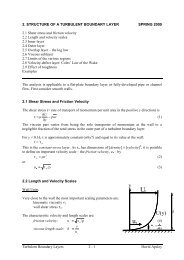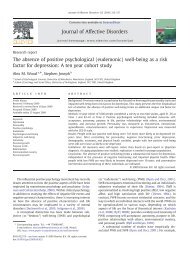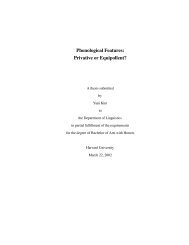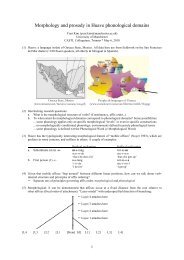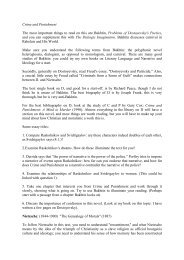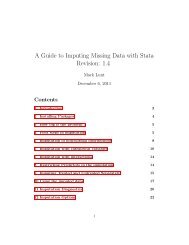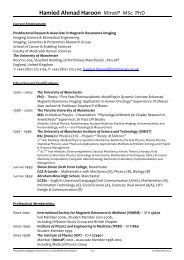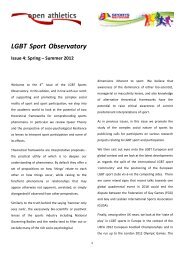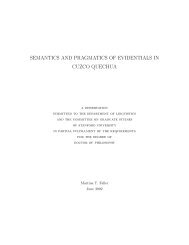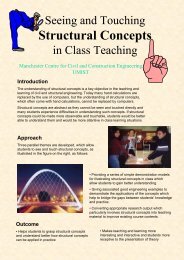You also want an ePaper? Increase the reach of your titles
YUMPU automatically turns print PDFs into web optimized ePapers that Google loves.
Examples<br />
Question 1.<br />
Consider airflow at 10 m s –1 over a flat plate. If the friction Reynolds number is 1200,<br />
calculate (a) the friction <strong>velocity</strong>; (b) the wall shear stress; (c) the depth of the boundary<br />
layer. Assume a Coles wake parameter = 0.45.<br />
Question <strong>2.</strong><br />
Wind velocities over open fields were measured as 5.89 m s –1 and 8.83 m s –1 at heights of<br />
2 m and 10 m respectively. Use this data to estimate: (a) the roughness length z0; (b) the<br />
friction <strong>velocity</strong> u ; (c) the <strong>velocity</strong> at height 25 m; (d) the average <strong>velocity</strong> over a depth of<br />
25 m.<br />
Question 3. (From White, 1994)<br />
J. Laufer’s (1954) pipe-flow experiments gave the following data at ReD ≈ 5×10 5<br />
r/R 0.0 0.102 0.206 0.412 0.617 0.784 0.846 0.907 0.963<br />
U/U0 1.0 0.997 0.988 0.959 0.908 0.847 0.818 0.771 0.690<br />
where U0 is the centreline <strong>velocity</strong>. Find the best-fit power-law profile of the form<br />
U<br />
U 0<br />
y 1/<br />
n<br />
= ( )<br />
R<br />
where y = R – r is the distance from the wall.<br />
Answers<br />
(1) (a) u = 0.41 m s –1<br />
(b) w = 0.20 N m –2<br />
(c) = 44 mm<br />
(2) (a) z0 = 0.080 m<br />
(b) u = 0.75 m s –1<br />
(c) U(z = 25 m) = 10.5 m s –1<br />
(d) Uav = 8.7 m s –1<br />
(3) n = 9<br />
Turbulent Boundary Layers 2 - 7 David Apsley





